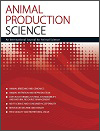We aimed to discover how capsaicin, a compound found in chili peppers, can positively affect broiler growth performance. Our research showed that incorporating capsaicin into the diet of broilers raised in tropical climates leads to improved weight gain and reduced heat stress by increased water intake. This offers a promising solution to optimise poultry production and sustainability in these challenging environments.

Animal Production Science
Volume 64 Number 5 2024
In this study, researchers successfully obtained the full-length cDNA sequence of the hepatocyte growth factor (HGF) gene and examined the expression profile of HGF and its receptor c-Met in different antler tissues. The results showed that HGF and its receptor c-Met were expressed in all antler tissues, with the highest expression in the velvet skin. The findings provide foundational data for understanding the potential role of HGF in regulating antler growth and development.
Search for tools to improve the productivity of the pig herds has been the subject of many studies. Development of suckling piglets influences their subsequent post-weaning performance, influencing the nursery, growth and finishing phases, and, consequently, the yield and quality of the swine carcass. Use of morphometric parameters to predict the probability of each weight class occurring at weaning can help manage piglets to increase the probability of their reaching a heavy weight class.
China has an extensive area across many temperature zones and a variety of cattle breeds, which are ideal models to study their adaptability to different environments. We successfully obtained the frequency of a single-nucleotide polymorphism in three groups of cattle in China. The frequency of allele A decreased gradually from north to south, whereas that of allele G showed the opposite trend. Our study will contribute to evaluating it as a genetic marker of heat tolerance for cattle breeding and genetics.
Road transport has long been recognised as a stressor for cattle. However, investigation into heat stress during road transport and within trailer microclimates has received limited attention. Here cattle body temperatures are shown to increase during handling and loading. In addition, cattle positioned on the upper deck had higher body temperatures when compared with cattle on the lower deck. External climatic conditions were a greater driver of microclimate for the upper and lower decks.
AN23378 Abstract | AN23378 Full Text | AN23378PDF (514 KB) Open Access Article
The resources needed to produce feed account for the largest variable cost in livestock production. The ability to identify animals that maintain adequate levels of production but consume less feed could lead to greater conservation of feed resources and improved herd profitability. Residual feed intake, a commonly used trait to select for improved feed efficiency, could increase maintenance-energy requirements. Therefore, cattle selected for improved performance on the basis of RFI may not demonstrate expected gains in energetic efficiency.




